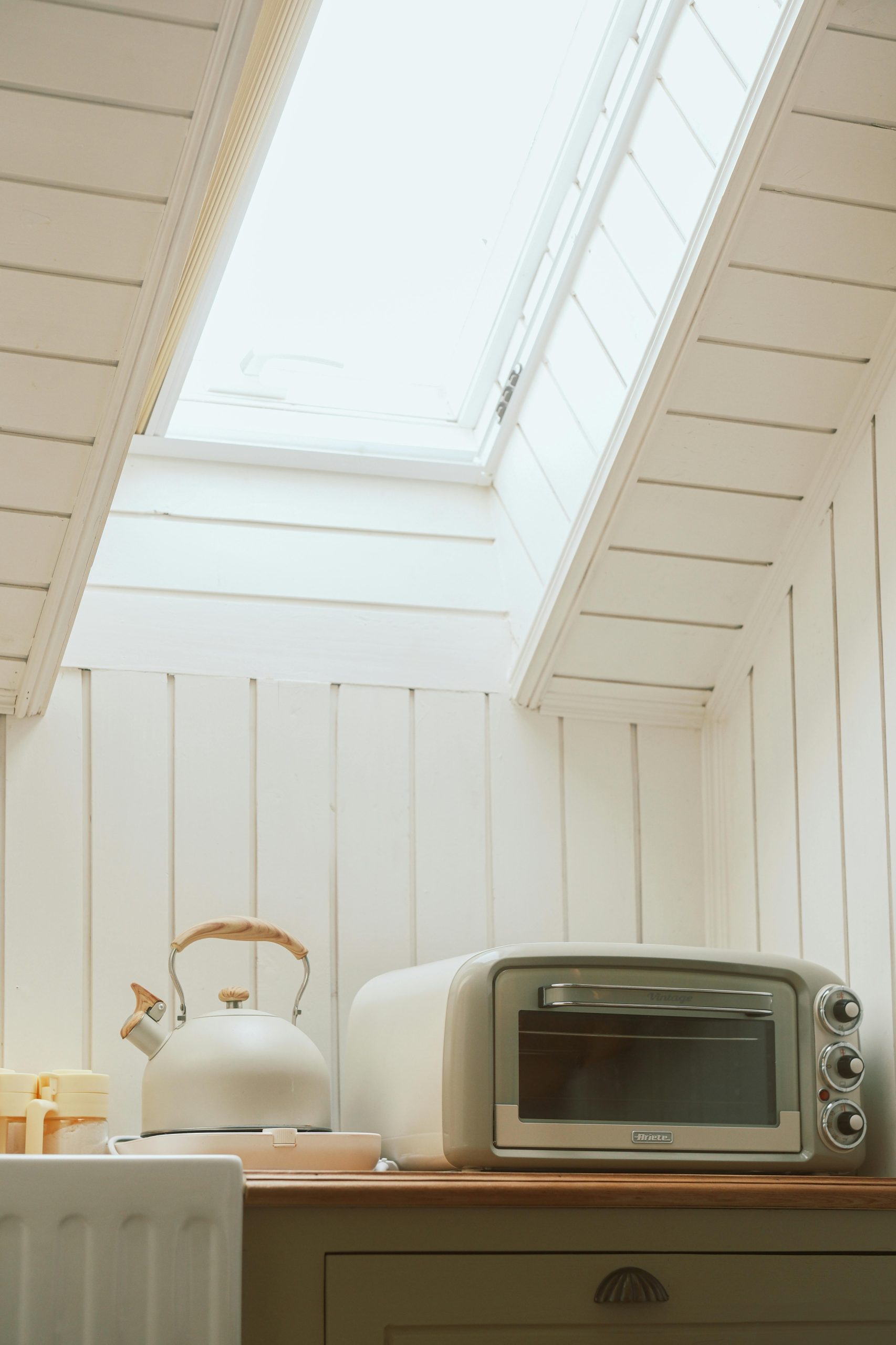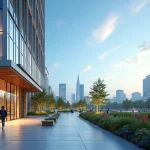Rooflight windows transform any space by flooding interiors with natural light and fresh air. Their versatile designs suit diverse architectural styles and offer energy efficiency beyond traditional windows. Whether enhancing ventilation or creating a striking visual feature, rooflights provide practical benefits that boost wellbeing and reduce energy costs—making them a smart investment for modern homes seeking brightness and comfort.
Understanding Rooflight Windows and Their Benefits
Premium Rooflight Window Solutions play a significant role in enhancing natural light and ventilation within both residential and commercial spaces. Rooflight windows, often termed skylights, are glazed openings installed on roofs to admit daylight and facilitate airflow. They have become an integral feature in modern architecture, serving not only aesthetic purposes but also improving energy efficiency.
Have you seen this : Unlock seamless growth with a crm setup specialist
Installing rooflights offers numerous advantages. Firstly, they substantially increase natural light, which can transform interior environments by making spaces feel brighter and more spacious. Their ability to admit up to three times more light than traditional vertical windows emphasizes their effectiveness in daylight harvesting. Beyond illumination, rooflights promote better ventilation, helping to regulate indoor air quality and temperature. This natural airflow reduces reliance on artificial cooling and heating systems, contributing to lower energy bills.
When compared to conventional windows, rooflight windows tend to provide a more even distribution of natural light, especially in areas where wall-mounted windows are limited. They are particularly beneficial in spaces such as attics, loft conversions, or flat roofs, where traditional windows cannot be installed efficiently. Their modern designs often feature sleek frames and advanced glazing options like impact-resistant and self-cleaning glass, which further enhance performance.
Also to read : Effortless mobile tyre fitting in chippenham for your vehicle
In the UK market, Premium Rooflight Window Solutions are available in various styles and qualities, catering to different architectural needs and budgets. For instance, Korniche Roof Lanterns offer contemporary aesthetics with excellent thermal performance, while options like Wendland Roof Lanterns deliver durability and classic looks at more accessible prices. The added benefit of easy and quick installation, combined with warranties and trustworthy manufacturers, ensures these solutions are both practical and reliable.
Today, many homeowners and property developers prefer rooflight windows for their ability to enhance natural lighting while maintaining energy efficiency. Proper placement is key positioning them to maximize daylight while minimizing glare and excess heat is essential. Considering factors such as orientation, glazing type, and shading options allows for optimal use of daylight, further supported by advanced technologies like solar-powered and smart glass options.
Types of Rooflight Windows and Installation Considerations
Flat Roof Skylights and Glazing Options
Flat roof glazing options provide versatile daylight solutions for modern homes and extensions. Flat roof skylight windows include frameless flat glass rooflights, dome rooflights, and walk-on glass units. These flat roof glazing options offer unobstructed light entry, supporting improved natural lighting solutions and maximizing daylight roof window benefits. Contemporary choices like triple-glazed rooflights and insulated roofing windows deliver remarkable energy efficiency, thanks to their low U-values and robust weatherproofing roof windows technologies.
Flat roof window installation challenges are often tied to ensuring watertight seals and correct angles for drainage. Proper integration with waterproof roof window trims and flashing kits is essential to prevent leaks. Selecting impact resistant glazing and self-cleaning glass for rooflights minimizes maintenance and boosts durability. Small rooflights for compact spaces and custom size roof windows are increasingly popular, letting homeowners adapt daylight harvesting technology to both expansive and tight areas. Crack-resistant, double glazed roof windows also improve noise insulation for rooflights, enhancing comfort through both sound and temperature control.
Pitched Roof Windows and Their Variants
Pitched roof windows comprise several best rooflight types, each tailored for different needs. Centre pivot and top-hung models—historically led by VELUX windows and now joined by varied velux alternatives—support easy opening for ventilation roof windows and simple rooflight maintenance tips. Electric, manual, and solar powered roof windows are suitable for every accessibility need, while solar options harness daylight for zero-energy operation.
When choosing roof windows for extensions or loft conversions, buyers often compare double glazed roof windows for their insulated performance and blackout blinds for skylights to improve sleep and comfort. Smaller options and rooflights for kitchens or bathrooms can be fitted with automatic rooflight blinds or manual controls, ensuring customizable shading and airflow. For heritage or conservation areas, pitched roof variants like conservation roof windows align with local window regulations. Smart glass roof windows and noise reduction roof windows are attractive to tech-savvy and peace-seeking homeowners alike.
Installation Challenges and Building Regulations Compliance
Every rooflight installation guide emphasizes the importance of planning and execution. Flat roof window installation challenges may involve heavier units (especially with triple glazing) that require mechanical lifting or extra manpower. Proper weatherproofing roof windows with correct flashings and seals is vital to prevent water ingress, particularly for flat roof glazing options.
Building regulations for roof windows are a key consideration. Installations must not exceed a 150mm projection from the roof plane, nor surpass the roof’s highest point. Side-facing rooflight windows must incorporate obscure glazing and respect height restrictions for operability. For listed buildings or conservation areas, strict conservation area window regulations apply, impacting style and sometimes frame material.
Compliance is vital for both safety and property value. Fire-rated roof windows and escape variants are available for areas needing emergency egress. U-value ratings, sound insulation, and impact resistant glazing are required for meeting national standards. Warranty on roof window products, often up to 20 years, provides peace of mind, especially when considering the cost of installing roof windows and potential skylight window replacement cost over a property’s lifetime.
Meticulous selection and installation unlock the main advantages of rooflights: sustainable energy savings from roof windows, daylight enhancement, and tailored style—all achieved while observing building regulations for roof windows.
Materials, Design, and Customization for Rooflight Windows
High-Performance Glass Types and Energy Efficiency
Selecting the right glass is essential when considering rooflight windows, not just for aesthetics but for performance. Impact resistant glazing ensures your skylight withstands hailstorms or accidental impacts, offering peace of mind for homeowners worried about weather or safety. Additionally, self-cleaning glass uses a sunlight-activated coating to break down grime, significantly simplifying maintenance and reducing the need for frequent cleaning—a welcome benefit in hard-to-reach installations.
Energy efficiency remains a top priority. Modern rooflight windows leverage double glazed roof windows or even triple glazing, minimizing heat loss during colder months. These insulated units, combined with advanced rooflight installation guide techniques, result in lower U-values, reducing reliance on heating and cooling systems. This translates to tangible energy savings and enhanced comfort throughout the year. For optimal energy performance, select rooflight windows featuring both self-cleaning glass and insulated glazing to maximize long-term value.
Design Trends: From Vintage to Contemporary Styles
Rooflight windows can transform home interiors in both style and function. Sleek modern roof windows with minimal frames and clean lines cater to contemporary architectural preferences, blending seamlessly with new builds and modern refurbishments. These designs are popular in urban settings where the aim is to create bright, open interiors—perfect for living rooms, kitchens, or loft conversions.
For traditional properties or listed buildings, options such as vintage style roof glazing are gaining traction. Conservation-friendly rooflight windows replicate historic profiles without sacrificing modern performance, allowing homeowners to respect regulations while still benefiting from daylight roof window advantages. Whether you seek a discreet appearance or an architectural statement, there’s a style to align with every vision.
Customization Options for Sizes, Glazing, and Aesthetics
Not all roofs or rooms are alike, so flexibility with custom size roof windows is a must. Manufacturers offer made-to-measure solutions, supporting both small rooflights for compact spaces and statement installations in expansive areas. These custom options can include features such as impact resistant glazing, various tints, or self-cleaning coatings to meet unique project requirements.
Choose from a broad palette of frame materials, including UPVC for low maintenance skylight options or powder-coated aluminium for extra durability. Customizable glazing options accommodate specific needs—enhanced sound insulation, added security, or UV protection—ensuring your selection is truly tailored.
With a focus on personalization, today’s rooflight windows provide more than just improved illumination. Customization supports architectural harmony, energy efficiency, and ease of upkeep, making them a practical and expressive addition to any building project.
Practical Considerations: Costs, Maintenance, and Safety
Budgeting for Different Types and Features
Understanding the cost of installing roof windows is vital for any renovation or construction project. Prices vary significantly based on rooflight types, glazing options, and features. For example, UPVC frame rooflights can be a notably affordable choice, with some models starting near £29 ex. VAT for smaller, simple units. More advanced designs, such as double glazed roof windows or flat roof glazing options with increased insulation, generally range from £400 to over £1,500. Incorporating features like impact resistant glazing or electric and manual opening mechanisms often increases the total cost, as does selecting custom size roof windows or premium brands.
When budgeting, consider additional expenses associated with the rooflight installation guide—labour, flashing kits, waterproof trims, and potential mechanical lifting for heavier triple-glazed installations. Remember, specific requirements for pitched or flat roofs, energy efficient skylights, and the need for daylight roof window benefits (such as optimized placement for natural lighting solutions) may influence the cost further.
Maintenance Techniques and Longevity Expectations
Regular attention ensures the lasting performance of your investment. Key rooflight maintenance tips include periodic cleaning with non-abrasive products, gentle handling of seals, and occasional lubrication of moving parts for manual or electric models. Self-cleaning glass for rooflights further reduces routine maintenance—using sunlight-activated coatings to break down grime—but interiors will still require basic care. Checking for condensation and promptly addressing any leaks or drafts can extend the unit’s lifespan.
High-quality installations can last from 8 to 15 years, while robust aluminium or UPVC frames and impact resistant glazing might exceed these averages. Longevity will also depend on adherence to the rooflight installation guide, drawing from roofer recommendations for skylights and following condensation prevention tips. Annual inspections after storms or extreme weather are advisable for assessing seals and verifying the durability of energy efficient skylights.
Safety Features: Walkable Glass, Security Measures, and Regulations
Safety considerations are paramount when selecting roof window solutions. Impact resistant glazing is essential for spaces at risk of falling debris or severe weather. For roof terraces and areas with foot traffic, only certified walk-on glass options should be chosen, as specified by manufacturer documentation. Features like multi-point locking mechanisms and advanced roof window security features provide added peace of mind, particularly for ground-accessible extensions or rooflights installed in vulnerable locations.
Compliance with building regulations for roof windows is required—this includes height restrictions for window openings, glazed roof window panels with obscure options for privacy, and proper weatherproofing roof windows to avoid leaks and drafts. Additional precautions, such as noise insulation for rooflights and UV protection glass, deliver both safety and comfort benefits.
Always verify that your installation meets the latest daylight roof window benefits guidelines and is covered by a robust warranty on roof window products, ensuring both security and long-term peace of mind for any property.
Advanced Features and Innovative Technologies
Energy Saving Benefits and U-Values
Energy efficient skylights have become a cornerstone for homeowners wishing to enhance natural light while controlling energy usage. The U-value, which measures thermal transmittance, is central to assessing performance: a lower U-value means better insulation and less heat loss through the glass. Energy efficient skylights often outperform traditional roof windows in this respect, thanks to triple glazing, specialist coatings, and thermally broken frames. The use of daylight harvesting technology further maximizes benefits, adjusting indoor lighting automatically by monitoring sunlight levels and thus cutting down electricity costs. For flat roofs, double glazed roof windows or insulated roofing windows offer robust solutions, with some models adding argon filling and low-e coatings to further minimize heat transfer.
Automation and Smart Home Integration
Modern rooflight windows now frequently incorporate smart glass roof windows and automatic rooflight blinds. Homeowners can connect these features to their smart home systems, automating light adjustment and privacy regardless of time or weather. The convenience extends to daylight sensors for rooflights, enabling natural lighting solutions to adapt dynamically throughout the day. Automated blinds also contribute to energy savings by providing shade during hot periods and reducing glare, while remote controls and manual vs electric roof blind options offer flexibility for different preferences or room requirements. Seamlessly integrating these automated technologies can result in significant energy savings from roof windows, especially when paired with eco-friendly roof windows that reduce environmental impact.
Noise Insulation and Glare Reduction Technologies
Noise reduction roof windows use multiple glazing layers and insulated frames to dampen external sounds—an invaluable feature in urban or high-traffic areas. Innovations in glass types for rooflights, such as laminated and acoustic glass, ensure quieter interiors and boost comfort. Light diffusion glass paired with built-in glare reduction techniques creates pleasant, evenly distributed daylight, eliminating harsh contrasts indoors. Integrated shading, including blackout or solar-powered options, further enhances comfort by addressing both noise insulation and glare. These technologies, combined with daylight harvesting technology, make rooflight windows for kitchens, living areas, or bedrooms an ideal solution for those seeking peaceful, naturally lit spaces while boosting energy efficiency and comfort.
Planning, Regulations, and Expertise Recommendations
Planning Permission and Regulatory Compliance
The Stanford Question Answering Dataset (SQuAD) method highlights that in England and Wales, planning permission for rooflight windows is not needed when installations do not project more than 15 cm beyond the roof plane, do not rise above the roof’s highest point, and maintain compliance with conservation area window regulations. For side-facing roof window units, regulations require obscure glazing and restrict the height of opening, while flat roof glazing options for conservation areas demand strict adherence to local requirements. Roof window safety regulations stipulate that any unit installed less than 1.7 meters above the internal floor must be non-opening, prioritizing security and privacy.
In cases where a property falls within a conservation area or involves listed status, building regulations for roof windows become even more rigorous, frequently involving local authority checks—and potentially requiring distinct materials or features for rooflights for listed buildings. It’s also essential that all rooflights and skylights comply with nationwide roof window safety regulations, which encompass impact resistant glazing and fire rating standards. Adhering to these aspects not only satisfies building control but also contributes to safer residential roof glazing innovations.
Choosing Qualified Installers and Experts
Choosing expert installers is pivotal for compliance and for maximising energy efficient skylights’ potential. Many roofer recommendations for skylights center on those with documented experience in both replacement rooflight units and new installations across compact, modern, or heritage environments. As rooflight installation guide practitioners point out, a certified specialist ensures that installation matches manufacturer and warranty requirements, paving the way for the best rooflight types to perform as specified by energy rating labels and insulated roofing windows standards.
Look for installers who are knowledgeable about daylight roof window benefits, the various flat roof window installation challenges, and smart glass roof windows if advanced features are required. They should readily advise on condensation prevention tips (for instance, using ventilation roof windows or proper flashing kits) and on selecting noise reduction roof windows that suit household needs. Many professionals will also guide clients through roof window flashing kits and recommend maintenance tips to keep skylight window insulation benefits at peak performance.
Installation Timeline and Product Warranties
Most residential roof window installation timelines range from one to two days, even for custom size roof windows or double glazed roof windows, provided property access and weather permit smooth work. Flat roof windows or large bespoke glazed roof window panels may require additional coordination or tools, but efficiency is a key focus among UK suppliers, reinforced by product design that encourages hassle-free setup and fast rooflight window repair services.
Roof window warranty claims and warranty on roof window products vary from one to twenty years, typically covering materials and construction rather than improper installation or accidental damage. Manufacturers of energy efficient skylights and natural lighting solutions usually require that all installation is conducted by experienced, recommended professionals to keep warranty coverage explained clear and enforceable. For customers seeking long-term peace of mind, always clarify the conditions regarding roof window warranty claims, and ask experts for written documentation to avoid surprises with affordable roof glazing installations.
By following these steps, property owners leverage the combined advantages of daylight harvesting technology, modern security features, and the latest rooftop window designs—while remaining aligned with conservation area window regulations, essential roof window safety regulations, and best practices within the industry.
Selecting the Right Rooflight for Your Property
Aesthetic and Functional Suitability
When seeking rooflights for modern homes, carefully assess both the design style and the specific requirements of your space. Rooflights for loft conversions can transform underutilized attics into bright, appealing rooms. Small rooflights for compact spaces work particularly well in corridors, studies, or bathrooms, filling tricky areas with daylight without overwhelming the architecture. Each sizing and configuration suits a different scenario, so using a dedicated rooflight installation guide can ensure the product complements both the building’s era and your practical needs. Choose from sleek modern roof windows with minimalist frames or opt for traditional designs that blend into period features. The right rooflight should harmonize visually, create a seamless transition outdoors, and answer the demands of the activity inside—whether it’s a lively kitchen or a peaceful reading nook.
Enhancing Home Value and Natural Light
Adding rooflights for extensions or utilizing natural lighting solutions is a proven way to improve both lifestyle and property appeal. A well-placed rooflight maximizes daylight harvesting technology, often making interiors appear larger and more inviting. Daylight roof window benefits include improved well-being and reduced energy bills since spaces become less reliant on electric lighting. Smart glass roof windows and energy efficient skylights are available for areas where heat retention and glare control matter most. In kitchens or lounges, double glazed roof windows with good U-values ensure warmth while still bringing in light. Meanwhile, energy rating labels and noise reduction roof windows support a peaceful, cost-effective environment, important for both everyday living and future resale value.
Best Placement for Maximized Light and Efficiency
Placement is fundamental for leveraging rooflights for modern homes and roof windows for extensions. For optimal daylight and efficiency, the orientation of the rooflight relative to the sun should be evaluated. North-facing installations provide consistent, soft light, while south-facing options increase intensive sun exposure—excellent for kitchens but requiring sun exposure control and roof window shading options for comfort. In compact attic settings, installing small rooflights for compact spaces towards the centre of the ceiling often delivers even light spread. Use rooflight window size guides to select dimensions proportional to the space. Combining these techniques with ventilation roof windows further boosts air quality and light, significantly enhancing living conditions. For best outcomes, refer to a detailed rooflight installation guide to accommodate building regulations and avoid condensation or weatherproofing issues, ensuring the investment delivers on everyday comfort and efficiency.
Additional Features: Shading, Blinds, and Ventilation Solutions
Shading and Light Control Options
Blackout blinds for skylights are among the most effective methods to block unwanted sunlight and manage glare. When selecting between manual vs electric roof blinds, consider the room’s accessibility and desired convenience. Manual shades work efficiently where windows are within easy reach. However, electric blinds—operated by simple wall switches or remote controls—are optimal for hard-to-reach skylights, loft ceilings, or high vaulted spaces, ensuring effortless daily adjustment.
A variety of roof window shading options are available, from blackout fabrics suited for bedrooms to light-filtering choices that still allow some daylight through while reducing glare. Many homeowners opt for noise cancelling blinds, which combine shading with sound insulation, offering a quieter interior while moderating sunlight. These shading accessories not only improve comfort and sleep quality but also help protect indoor furnishings by filtering UV rays, addressing concerns about sun-induced fading.
Ventilation and Airflow Enhancement
Ventilation roof windows do more than bring in light—these units support airflow, essential for maintaining a healthy living environment. Flat and pitched roof windows with well-designed ventilation features enable stale air to escape and fresh air to circulate, minimizing condensation risks. Some products pair seamlessly with automated systems: opening either by timer, sensor, or remote, allowing customized control over indoor climate. This flexibility is particularly helpful in kitchens, bathrooms, or any area where high humidity may develop.
Integrating blackout blinds for skylights with advanced ventilation roof windows ensures both shade and air movement can be balanced, prioritizing comfort throughout the year. Solutions like noise cancelling blinds can complement this arrangement, muffling external sounds while the window is open for ventilating.
Child Safety and User Convenience
Child safety is a widespread concern when fitting roof window shading options and choosing between manual vs electric roof blinds. Manual models are designed with cordless mechanisms or secure loop fastenings, reducing risks in family environments. On the other hand, electric systems eliminate the need for accessible cords entirely, operated at the touch of a button—ideal in children’s bedrooms, playrooms, or communal spaces.
For enhanced safety, noise cancelling blinds may incorporate soft-close technologies, and certain blackout blinds feature locking positions, deterring tampering by little hands. User convenience also comes from the ability to automate shading and ventilation roof windows, ensuring regular air exchange and responsive shading without manual effort. These additional features collectively support a secure, adaptable, and enjoyable living space for everyone.
Comparing Rooflight and Skylight Options and Final Recommendations
Benefits vs Limitations of Various Rooflight Types
A clear understanding of the pros and cons of rooflights begins with distinguishing between roof windows and skylights. Rooflights, often positioned on both flat and pitched roofs, let in considerably more daylight compared to conventional vertical windows; some models provide up to three times more light, maximizing daylight roof window benefits and improving natural lighting solutions. This can transform underlit spaces, boost mood, and support energy savings from roof windows by cutting reliance on artificial lighting. However, such increased light can cause glare or overheating, especially in unshaded, south-facing roofs. Roof windows, sometimes known as Velux alternatives, frequently come with shading options like blackout blinds for skylights or solar-powered roof window shades, addressing sun exposure control and glare reduction techniques. Yet, installing roof windows (or any rooflight windows) in conservation areas or listed buildings may require adherence to strict conservation area window regulations, which could limit design flexibility.
The best rooflight types balance daylight maximization with features like noise insulation for rooflights, condensation prevention tips, and weatherproofing roof windows to suit climate and installation site. Opening or vented roof windows, especially in kitchens or bathrooms, add valuable roof ventilation and aid in roof window condensation solutions.
Material Selection for Safety and Durability
When evaluating flat roof glazing options or pitched roof solutions, material choice significantly impacts performance and safety. Products leveraging impact resistant glazing or fully impact-resistant roof glazing ensure durability—these are essential for homes in regions exposed to hail or falling debris. Triple glazed roof windows or those using laminated glass offer both robust physical protection and excellent thermal insulation, translating to lower U-values and improved energy efficient skylights. For added trust, look for comprehensive warranty on roof window products, and check if the warranty coverage includes accidental breakage or manufacturer defects.
Frames made from UPVC are prized for being low maintenance skylight options and for their lightweight nature, yet remain resistant to rot and corrosion, making them practical for most residential rooflight installation scenarios. For those emphasizing tradition or seeking visual harmony in listed properties, wooden frame roof windows are popular, though they demand more regular care.
Making Informed Purchasing Decisions Based on Needs
Selecting the right option hinges on how your chosen rooflight aligns with your priorities—be it energy efficiency, aesthetics, maintenance requirements, or safety. Consider the size, type, and best placement according to sun orientation and room function. Modern rooflights for loft conversions or roof windows for extensions enhance usable space and market value, especially when they feature daylight harvesting technology or are integrated with smart home compatible skylights for automated comfort.
Before commitment, consult a rooflight installation guide and verify building regulations for roof windows, particularly regarding projection limits, minimum installation heights, and security features. Most rooflight windows—whether budget or premium—now support easier installation and comply with safety standards, but it’s crucial to confirm if your unit is safe to walk on or needs bespoke support (especially for walk-on rooflights).
Factor in the cost of installing roof windows, which depends on size, type, and glazing specification—affordable roof glazing is possible with UPVC and double glazed roof windows, while premium options like large roof lanterns or custom size roof windows carry higher installation and material costs.
In sum, balancing the pros and cons of rooflights with personal requirements, safety, and regulatory demands is vital. Use this information to guide purchasing decisions, ensuring your selection of rooflight windows delivers on comfort, efficient daylight, and long-term reliability.
Choosing the Best Rooflight Windows for Modern Homes
Precision: The best rooflight windows for modern homes are those combining energy efficient skylights, impact resistant glazing, and sleek modern roof windows with options for both flat and pitched roofs. These choices maximize daylight roof window benefits, enhance natural lighting solutions, and deliver reliable ventilation roof windows while complying with building regulations.
When evaluating rooflights for modern homes, start by considering models that feature energy efficient skylights. These windows typically utilize advanced double glazed roof windows or even triple glazing, markedly improving the insulation benefits—a critical factor in lowering energy bills and maintaining comfort. For greater peace of mind, look for impact resistant glazing that stands up to weather and protects your property, especially in exposed or high-traffic locations.
Flat roof glazing options have evolved to include stylish, minimalist designs like frameless flat glass rooflights or Korniche lanterns, which easily integrate with contemporary aesthetics. They are engineered for optimal daylight harvesting technology, creating a brighter, airier living space. For those prioritizing ease of upkeep, self-cleaning glass for rooflights is available and particularly valuable in roof window installations that are hard to reach.
Personalization is readily achievable with custom size roof windows, which fit unique or unconventional spaces perfectly—especially important in loft conversions or home extensions. Noise reduction roof windows add another layer of comfort by diminishing external sounds, making them ideal for busy urban environments. Modern roof windows don’t just illuminate homes; they improve sound quality, insulation, and even the security of your property.
Ventilation roof windows and automatic rooflight blinds give precise control over airflow and shading. This flexibility is essential for kitchens and bathrooms, where humidity and condensation prevention tips are key. Select models now offer smart home compatible skylights or solar powered roof windows, meeting the demands of eco-friendly building practices and advanced convenience.
Carefully balancing performance, affordability, and design, today’s best rooflight windows embody the latest in natural lighting solutions. From affordable roof glazing options to premium bespoke skylights, homeowners can select from a wide spectrum of products—all designed to deliver maximum daylight, lower costs, and bring a luminous transformation to living spaces.











